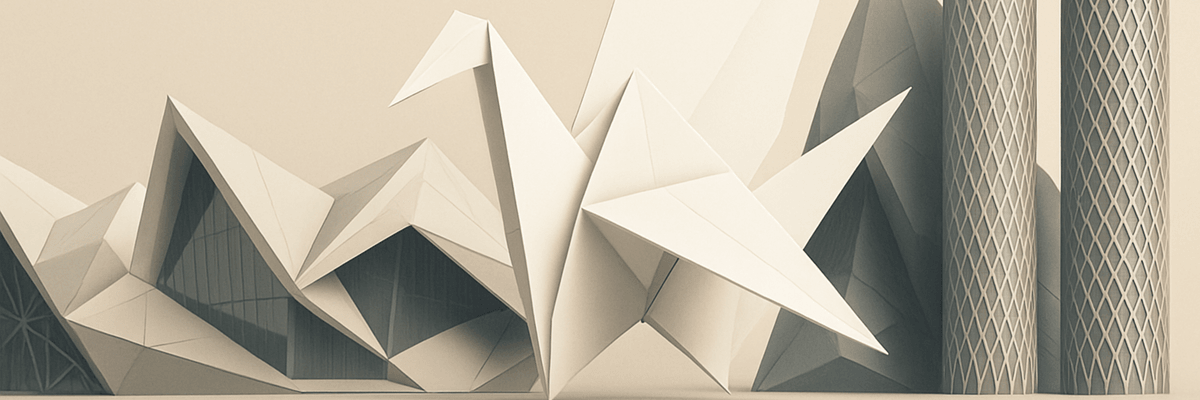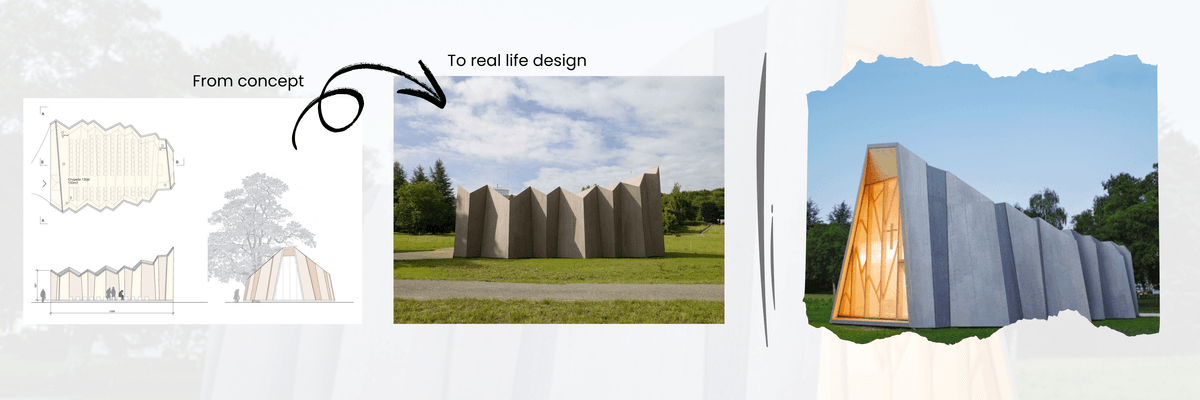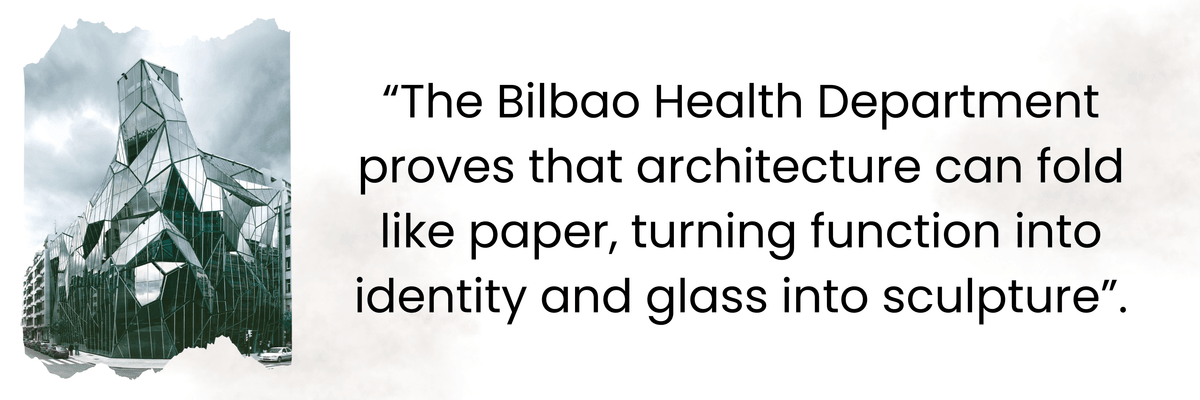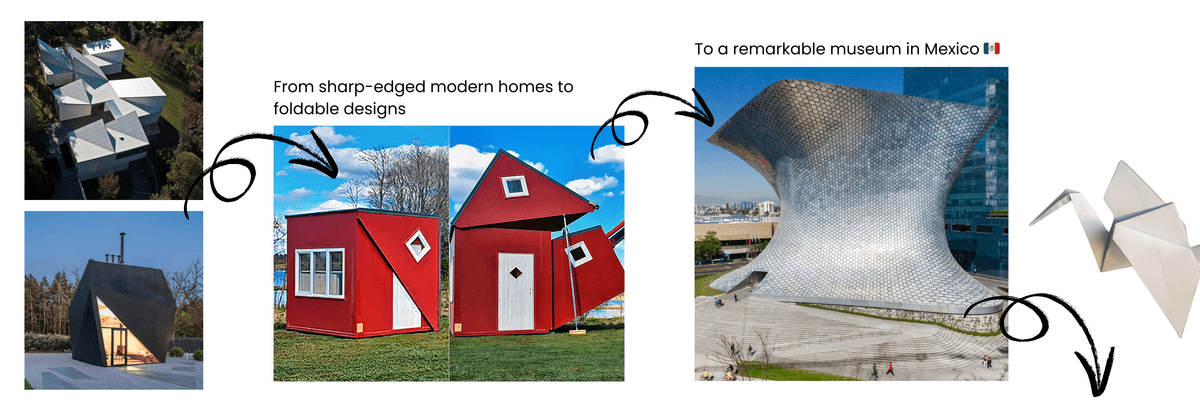When most of us hear origami, we picture delicate paper cranes, folded by hand with patience and precision. But what if we told you the same principles that transform a flat sheet of paper into a bird or a flower are also shaping some of the world’s most innovative buildings?
Origami isn’t just an art form, it’s a design language. By folding, creasing, and shaping flat surfaces, architects can create complex structures that are functional, sustainable, and breathtakingly beautiful. Let’s explore how origami is inspiring modern architecture, and look at real projects where folds make the impossible possible.

Why Architects Turn to Origami
The magic of origami lies in its transformation. A single flat sheet becomes something dynamic, three-dimensional, and strong. In architecture, this translates into:
- Efficiency: Folded forms can use less material while still providing strength.
- Adaptability: Folds can move, opening or closing façades to respond to light, heat, and climate.
- Aesthetics: Geometric folds create dramatic shadows, angles, and rhythms that bring buildings to life.
- Inspiration: Folding opens a creative playground where a sketch on paper can become a tower, chapel, or home.
Real-World Examples of Origami in Architecture
🇦🇪 Al Bahar Towers, Abu Dhabi
Perhaps the most famous origami-inspired building is the Al Bahar Towers. These twin skyscrapers in Abu Dhabi feature a dynamic façade made of more than 1,000 umbrella-like panels.
Each panel opens and closes in response to the sun, acting like a high-tech version of the traditional mashrabiya screen. The folding geometry reduces solar glare, keeps interiors cool, and saves energy, proving that origami isn’t just beautiful, it’s smart.
🇪🇸 Bilbao Health Department Headquarters, Spain
This building stands out with its folded glass façade, resembling a giant piece of paper creased multiple times. The sharp folds break up reflections, create depth, and give the building a unique sculptural presence in the city.
Here, origami isn’t just functional; it’s identity-building. The health department becomes instantly recognizable, while the folds also help modulate light and views.
🇨🇭Chapel for the Deaconess of St. Loup, Switzerland
In Pompaples, Switzerland, a small wooden chapel proves that origami isn’t only for glass and steel skyscrapers. The chapel’s roof and walls fold like an intricate paper lantern. Light filters in through the creases, creating a peaceful, spiritual atmosphere.
By using thin timber panels and origami geometry, the architects achieved a design that feels sacred, lightweight, and sustainable.

🏠 Origami Houses
Across the world, architects are experimenting with folded forms in residential projects. Roofs that zigzag, walls that angle sharply, and spaces that unfold to frame views of the landscape.
These houses show that origami isn’t just for grand public works—folds can bring creativity and efficiency into everyday living.
🇲🇽 Soumaya Museum, Mexico
In Mexico City, the Soumaya Museum rises like a folded sculpture, shimmering with more than 16,000 hexagonal aluminum tiles. Its curving, faceted skin feels as though it’s been shaped by an invisible hand folding a massive sheet of metal.
The building’s form isn’t just striking; it creates a dynamic play of light and shadow, changing throughout the day as the sun moves. Much like origami, the folds and surfaces transform a simple geometry into something fluid, complex, and alive.
The Soumaya shows how origami’s spirit of transformation can inspire cultural landmarks, proving that folds don’t just build houses, they can also shape icons of art and identity.
Lessons from Folding Paper to Folding Cities
Origami offers architects and engineers a toolkit for the future:
- Responsive design: façades that fold to adapt to changing conditions.
- Sustainability: folds that improve shading, cooling, and energy use.
- Creativity unlocked: a reminder that even a humble sheet of paper can spark bold architectural visions.
Final Fold
The next time you fold a paper crane or a fortune teller, imagine that same act on a massive scale. Origami is no longer just child’s play; it’s a pathway to designing buildings that are smarter, greener, and more inspiring.
From the sun-shielding folds of the Al Bahar Towers to the serene chapel in Switzerland, origami proves one thing: the future of architecture may begin with a single fold.
Discover how NASA turned origami into a starshade design here 👇
Resourses: rouveure-marquez / thesuperboo / dwell / archdaily / arquitecturaviva / CNBC International Live / TheSuperBOO / NotimexTV

